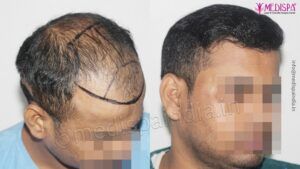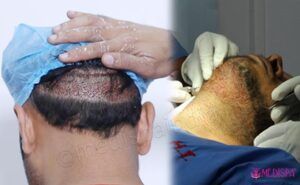
A hair transplant is a small surgical treatment, and while it has been promoted as being quite straightforward, this is not entirely accurate. If a skilled and experienced hair transplant surgeon performs the process, it is quite straightforward. Since there is danger involved with every surgical operation, it is better to make your own decisions and not trust a beginner or underqualified doctor.
India’s top hair transplant tourist destination is the Medispa hair transplant clinic, which has world-class facilities and is located in Delhi and Jaipur. Only a small percentage of the hair transplant surgeons in the pink city are regarded as the best in the world. Dr. Suneet Soni is a highly skilled surgeon whose proficiency in this profession is unparalleled. Because of his exceptional creative ability, remarkable medical abilities, and extensive knowledge, he is truly unique. You can anticipate flawless outcomes that appear completely genuine.
Thus, you’ve come to the correct spot if you’ve been looking for the best therapy for hair loss. Make an appointment with Medispa Clinic right now for the best hair transplant care.
Although hair transplant in Ajmer is commonly available, individuals still desire the best results possible from cosmetic operations like hair transplants, which are well-known in Delhi and Jaipur. Top hair restoration cities in India are Delhi and Jaipur, where many local patients go from all across the nation in the hopes of getting the best hair transplant results at a reasonable price.
The hair transplant cost in Ajmer is comparable, however certain reputable facilities in Jaipur and Delhi offer superior services. Who wouldn’t want the best at a reasonable price? These locations annually see a significant influx of patients from all around the world.
How can hair transplants provide outcomes that last?
Although the patterns of hair loss in men and women differ, both genders compose the frontal or vertex area of the head. The reason for the regular pattern of hair loss in certain areas is the existence of androgen-sensitive hair follicles. The receptors on the surface of these DHT, or androgen-sensitive, hair follicles become hypersensitive to the androgen hormone. Hormone sensitivity leads to miniaturization, or the gradual shrinking of hair follicles that eventually shed, which is what causes hair loss. Hair follicles on the back and sides of the head are not impacted by androgen hormone, in contrast to those on the back and sides of the head, which are androgen resistant because they lack receptors on the surface.
The follicles, not the scalp, contain the genetic composition of hairs. Consequently, these androgen insensitive hair follicles are lifelong and keep their characteristic no matter where they are transplanted. This fundamental idea underpins the long-term consequences of hair transplantation. The back and sides of the head are harvested for their long-term advantages and androgen-insensitive hair follicles.
How can I be confident that my hair transplant will have permanent results?
Permanent outcomes are undoubtedly achieved with hair transplants, although this is not always the case. Yes, a beginner surgeon should not handle these little hair follicles as they are extremely sensitive. You don’t have to risk them because the surgeon’s decision controls the result. A few key components that a skilled surgeon can assure long-term results are outlined below.
- Prevent damage to hair transplants: Hair grafts are extremely sensitive and need to be handled, extracted, and transplanted with care. In order to ensure the lowest possible damage rate, the hair grafts should be selected with the appropriate hands. The hair transplants must be handled under the close observation of a qualified team and under the tight guidance of the doctor. It is quite likely that you will have a permanent hair transplant if the hair grafts survive.
- Using the proper procedure: The hair transplant technique is chosen based on the patient’s particular needs and circumstances. Selecting the appropriate procedure is essential for a higher rate of hair graft survival. There could be clauses stating that a surgeon with less experience will overharvest the donor site or violate the safe donor region, which would affect how long the results last. After a hair transplant, you can ensure long-lasting results and prevent damage if your doctor used the appropriate approach.
- Good after care: You would think that the transplanted hairs would take care of themselves after the procedure, and they will, but you will need to give them your full attention for a few days. Yes, you have to strictly adhere to the surgeon’s directions until your physical recovery is complete. Most individuals lose their transplanted hair follicles due to inadequate upkeep. Thus, use extra caution and closely adhere to all instructions from your hair transplant team until your physical recovery is complete.







